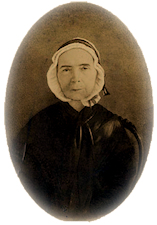29th.—Nothing of importance from the army. The people of Fredericksburg suffering greatly from the sudden move. I know a family, accustomed to every luxury at home, now in a damp basement-room in Richmond. The mother and three young daughters cooking, washing, etc.; the father, a merchant, is sick and cut off from business, friends, and every thing else. Another family, consisting of mother and four daughters, in one room, supported by the work of one of the daughters who has an office in the Note-Signing Department. To keep starvation from the house is all that they can do; their supplies in Fredericksburg can’t be brought to them—no transportation. I cannot mention the numbers who are similarly situated; the country is filled with them. Country houses, as usual, show a marvellous degree of elasticity. A small house accommodating any number who may apply; pallets spread on the floor; every sofa and couch sheeted for visitors of whom they never heard before. If the city people would do more in that way, there would be less suffering. Every cottage in this village is full; and now families are looking with wistful eyes at the ball-room belonging to the hotel, which, it seems to me, might be partitioned off to accommodate several families. The billiard-rooms are taken, it is said, though not yet occupied. But how everybody is to be supported is a difficult question to decide. Luxuries have been given up long ago, by many persons. Coffee is $4 per pound, and good tea from $18 to $20; butter ranges from $1.50 to $2 per pound; lard 50 cents; corn $15 per barrel; and wheat $4.50 per bushel. We can’t get a muslin dress for less than $6 or $8 per yard; calico $1.15, etc. This last is no great hardship, for we will all resort to homespun. We are knitting our own stockings, and regret that we did not learn to spin and weave. The North Carolina homespun is exceedingly pretty, and makes a genteel dress; the only difficulty is in the dye; the colours are pretty, but we have not learned the art of setting the wood colours; but we are improving in that art too, and when the first dye fades, we can dip them again in the dye.
Diary of a Southern Refugee, Judith White McGuire.

• • • • • • • • • • • • • • • • • • • • • • • • • • • • • • • • •